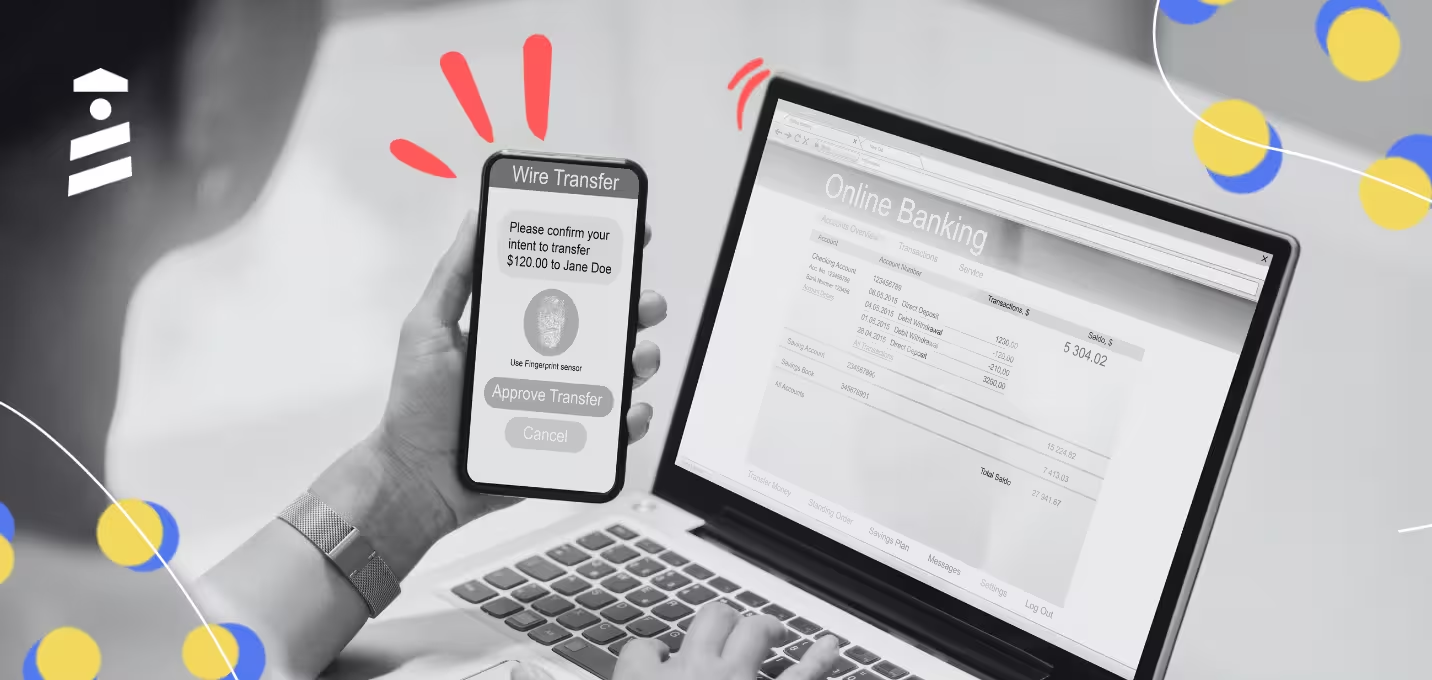

Whether you've been in the event tracking game for some time or are just getting started, if you're looking for event tracking tools, you're at the right place.
In this article, we're gonna talk about;
- What is event tracking?
- Why do you need event tracking tools?
- Important features of event tracking tools
- And best event tracking tools
Let's get started!
TL;DR
- UserGuiding — the product adoption tool with in-app experiences
- Mixpanel — analytics tool with retention and growth reports
- Hotjar — analytics tool with heatmaps and session recordings
- Amplitude — product analytics tool with extensive A/B testing reports
- Heap — product analytics tool with automation and chart templates
- Fullstory — event tracking tool with sentiment and behavior analytics
- Matomo — open-source and data privacy-focused web analytics system
- Google Analytics (GA4) — website analytics platform with easy integrations and detailed reports
What is Event Tracking?
Event tracking is the process of monitoring and analyzing the specific actions users take on a website or mobile application.
These actions are predetermined by product teams based on their product vision and company goals. They can vary from clicks and form submissions to custom interactions, such as in-app purchases.
Tracking these user events allows product teams to understand how users interact with their product or website and optimize it accordingly.
Different industries and products might require tracking various events. However, the most common events tracked by many companies include:
- Page views/ user visits
- CTA clicks
- Webinar sign-ups
- Form/ survey submissions
- Task completions
- Project creations
- Onboarding interactions
- Video plays
- Feature usage
- Purchases
- Cart abandonments
- Session time
- Session start/ end
- User dropoff
Why Do You Need Event Tracking Tools?
Can you track user events by yourself without 3rd party tools? Absolutely yes.
Is it logical and worthwhile to put in all the manual work? Absolutely no.
Event tracking tools show you which features are popular and which ones are ignored.
- Do users get stuck somewhere?
- Are they abandoning the cart at the last step?
- Do they notice the CTA and interact with it?
- Can they submit feedback easily, or do they face any difficulty?
- Is there any design fault blocking something important?
You can track all these events without setting up separate code logics, diverting data to Google Sheets, and analyzing each case individually. Event tracking tools allow you to create and monitor custom events without coding struggles.
They gather all data into user-friendly dashboards for easier analysis. Some tools even provide behavioral analytics or sentiment analysis. Or, they allow non-technical users to ask questions about their data and receive answers or quick reports.
Additionally, you can link your business goals with user events and track them together.
Event tracking tools empower teams with presentable results and dashboards. You can then easily share them with your stakeholders or non-technical team members.
For example;
→ Does your marketing team want to see the impact of a new campaign? An event tracking tool can create detailed dashboards or reports for CTA clicks, including pie charts or bar charts.
→ Do you need to assess your website engagement? A tracking tool can provide insights about user feelings through sentiment analysis, identifying actions like anger clicks.
Important Features of An Event Tracking Tool
Different event tracking tools offer various functionalities beyond event tracking. Some excel in analytics, while others focus on product engagement features.
But here's what they all should have 👇🏻
User Segmentation
User segmentation is crucial for analyzing how different user groups interact with specific website elements or product features.
This insight helps you identify if certain segments show a lack of interest in a particular feature.
→ For example, if one user group is not engaging with a new feature, you can create additional material or tutorials to promote adoption among this group. Tailoring your approach based on segmentation ensures each user group receives the most relevant experience.
A/B Testing
A/B testing enables you to compare different versions of a feature or page to see which performs better. This data-driven approach helps you make informed decisions.
→ For instance, you can test two different landing pages to determine which one generates more conversions. Then, optimize your processes for better product performance.
Custom Event Creation
Custom event creation allows you to track specific actions that matter to your business. Not every user action is the same for every company. By customizing events, you ensure you’re capturing the data most relevant to your goals.
→ For example, in a language learning app, you might track course completions to understand user progress and engagement. In gaming, you could track the time users spend on character building to see which features are most engaging.
Backward Tracking
Backward tracking is essential for applying event rules to users who completed the criteria before the event was created. This feature ensures you don’t lose any historical data and always have a complete picture of user behavior.
→ For instance, if you start tracking a new feature today, backward tracking allows you to see past user interactions with that feature, giving you a full historical record. This comprehensive view is vital for accurate analysis and informed decision-making.
Real-Time Data Streaming
Real-time data streaming provides immediate insights into user actions. This allows for quick decision-making and problem-solving.
→ For instance, let's assume a new feature is causing unexpected issues. Real-time data can help you identify and address the problem promptly and minimize user frustration.
Integrations
Integrations with other tools and platforms enhance the functionality of your event-tracking system. They allow for seamless data flow and comprehensive analysis.
→ For example, integrating with a CRM system lets you combine user behavior data with customer information. It provides a more holistic view of your users and enables better-targeted strategies.
Best Event Tracking Tools
UserGuiding
UserGuiding is a product adoption platform that helps companies engage with users within their products and improve product retention.
It enables you to create interactive in-app experiences, user surveys, resource centers, product update pages, knowledge bases, and more.
Once you ensure higher feature usage with in-app communication and interactions, you can increase overall user satisfaction and loyalty, as well.

With UserGuiding, you can track changes in certain user attributes and monitor them through the analytics dashboard.

Once you choose the user attribute to monitor, the system tracks and counts the event whenever the attribute's value changes to the specified one. Just ensure the attribute is identified and sent to UserGuiding.
You can also activate backward tracking, which allows you to apply tracking to users who met the criteria before the event was created. This way, you capture historical data and gain a complete picture of your user interactions.
By combining event-tracking with UserGuiding's other features, you can...
- Segment your users based on behavior
- Deliver personalized experiences
- Boost engagement and feature adoption
- Make data-driven decisions
Here's what the analytics dashboard looks like:

With UserGuiding's analytics functionality, you get a clear picture of how users interact with your product. You can see graphical distributions of completions and views to spot user trends.
Dive into step analytics to understand exactly where users start to drop off. Want to dig even deeper? Check out the user list to look at individual user journeys.
It's all about giving you the insights you need to improve the user experience!
👉🏻 Try it out yourself 👈🏻
UserGuiding Pricing
UserGuiding’s pricing plans are based on the number of active users you have. When billed yearly:
- Starter Plan: Starting from $174/month.
- Growth Plan: Starting from $349/month.
- Enterprise Plan: Custom quote.
PLUS: 14-day free trial 🎉
Mixpanel
Mixpanel is a tool for event tracking and product analytics. It supports mobile apps, web apps, and websites.
Mixpanel provides insights through detailed reports and real-time data analysis. Businesses use it to understand customer behavior and trends.

Mixpanel tracks events and creates custom dashboards and reports. The dashboards reveal correlations (or lack of it) to help you identify root causes quickly. It offers various filtering and breakdown options, such as demographics, account types, and behavior.
Here's what the main dashboard looks like:

And here's an example user page:

As an analytics tool, Mixpanel can also be used for other monitoring tasks, including tracking retention, growth, and campaigns.
Here's an example retention report:

Mixpanel Pricing
- Free: $0
- Growth: $28/mo
- Enterprise: custom pricing
PLUS: 1 year free plan for startups
Hotjar
Hotjar is a user behavior analytics tool. It enables companies to understand users better by empowering them with heatmaps and user session recordings.

With heatmaps, you can see which parts of your website get attention and traffic and which ones are skipped or overlooked.
They also show whether your banners, CTAs, and other interactive elements drive sales and signups.
And with session replay, you can see exactly how users navigate your site or app. You can also see all the issues and bugs they encounter during their session and possibly understand why they behave in a certain way.

Hotjar Pricing
Observe: (paid yearly)
- Basic: $0
- Plus: $31/mo
- Business: $79/mo
- Scale: $170/mo
Ask: (paid yearly)
- Basic: $0
- Plus: $47/mo
- Business: $63/mo
- Scale: $127/mo
Engage: (paid yearly)
- Basic: $0
- Plus: $39.2/mo
- Business: $440/mo
- Scale: custom pricing
PLUS: 30-day free trial 🎉
Amplitude
Amplitude is another powerful event tracking and product analytics platform. It works both on apps and websites and offers session recording functionality.

Amplitude visualizes all user data and consolidates it into one comprehensive dashboard. Here, you can track real-time event streams, session engagement, and product KPIs.

Amplitude offers comprehensive funnel insights and reporting across various channels, marketing and sales campaigns, and web pages.
Its main dashboard looks like this 👇🏻

With Amplitude, you can track user behavior, create targeted user segments, and conduct A/B tests to enhance engagement.
Amplitude Pricing
- Starter: $0
- Plus: $49/mo (paid annually)
- Growth: custom pricing
Heap
Heap is a product analytics and event-tracking tool that offers extensive automation features as well as detailed dashboards. It assists teams in effectively handling and analyzing their data without becoming overwhelmed or missing critical aspects.

Heap's most prominent features are Heap Illuminate and Journeys.
➡️ Heap Illuminate automatically uncovers key user behaviors and patterns within your data. It uses advanced algorithms to identify significant actions and trends without requiring manual analysis.
This feature helps you conduct conversion tracking and quickly pinpoint what drives user engagement and retention.
➡️ Heap Journey allows you to visualize and analyze the complete user journey across your product. It maps out each step users take, from initial interaction to final conversion, providing a clear view of their paths.
This feature helps you understand where users drop off, identify bottlenecks, and optimize the user experience. Once you add all the events and possible journey steps, the map looks like this:

Heap provides teams with template charts to help them interpret their data. Impressively, instead of using technical names, these templates are titled as questions commonly asked by managers.
This approach makes it easier for teams to find the insights they need.
Like this:

They're categorized based on main goals, such as acquisition, activation, and retention. Once you choose a template, all you need to do is fill out the details and click on analyze 👇🏻

You can also record session replays, create heatmaps, or get quick reports and analysis of your data with the help of AI CoPilot. You can ask for reports, comparison tables, or chart summaries.
Heap Pricing
- Free: $0
- All other three pricing plans of Heap (Growth, Pro, Premier) are priced on a custom basis. Contact them for more information.
Fullstory
Fullstory is a behavioral data analytics tool. It promises businesses to understand user behavior by interpreting every button click, tap, and page reload. Fullstory claims that every interaction shows user sentiment —how users feel and possibly why.

Fullstory helps companies pinpoint and resolve friction points before they lead to revenue loss. It identifies dead clicks, rage clicks, and error clicks. Then, it creates detailed reports by providing auto-quantification and reveals potential revenue impact.

Similar to many other event tracking tools, Fullstory offers session recording and heatmap functionalities.
It integrates session replays into summaries and reports, providing valuable context for teams to better understand user interactions.
However, with Fullstory, heatmaps are more than just heatmaps —they include sentiment analysis, too. When you notice a "heated" spot on your website, it might not always indicate great interaction; it could also be a rage-click point.

Fullstory Pricing
- All pricing plans of Fullstory (Data Direct, Business, Advanced, Enterprise) are priced on a custom basis. Contact them for more information.
PLUS: 14-day free trial 🎉
Matomo
Matomo is an open-source web analytics and event tracking system focused on data security and privacy. Its standout features include complete data ownership, robust privacy compliance (such as GDPR), and extensive customization options.
Matomo enables businesses to track user behavior and interactions, assess website performance, and create detailed reports. All while maintaining the highest standards of data privacy and security!

A unique feature of Matomo is its visitor profiles, which compile every action an individual user has taken on your website into a detailed historical record.
You can analyze your data by location, device type, software, time, or user ID. Additionally, you can view it in various formats, including cohort, world map, or list format.
This allows you to gain insights into the journeys of both loyal customers and frequent visitors who have yet to make a purchase.

Matomo also includes key event-tracking tools such as real-time reporting, heatmaps, session recordings, A/B testing, funnels, and goal tracking.
Matomo Pricing
- On-Premise: 0 €
- Cloud: 22 €/mo (50,000 hits monthly traffic)
PLUS: 21-day free trial 🎉
Google Analytics (GA4)
Google Analytics is one of the most popular website analytics and tracking tools among businesses. It integrates perfectly with other Google tools, and the free plan is loaded with features.
You can easily track conversion rates, analyze your audience, and model attributions.

Google Analytics excels with its built-in automation and modeling capabilities. It leverages machine learning to generate predictive reports, summaries, and insights from customer data.
GA offers extensive analytics features and provides detailed engagement reports from event tracking data. It also offers monetization and acquisition reports. It visualizes the customer journey and funnels and gives a clear view of user interactions.
Here's an example event tracking dashboard from GA4:

Additionally, it highlights segment overlaps and reveals where customers from different segments exhibit similar behaviors. This helps uncover new insights and deepens your understanding of your user base.
However, GA has a steep learning curve and is not very user-friendly.
Google Analytics (GA4) Pricing
- GA4 Standard: $0
- GA 360: typically begins at $50,000/year
To Sum Up...
There are many event tracking tools with various features and additional functionalities available in the market. These include advanced analytics, behavior analytics, session replays, heatmaps, in-app flows, goal tracking...
There is a suitable option for every need and budget.
Good luck finding the right one for you!
Frequently Asked Questions
What is event tracking in CRM?
Event tracking in CRM refers to a feature that records data on different actions or behaviors of contacts. It enables the creation of events for any activity either manually or through automated processes. This feature is valuable for monitoring and analyzing customer interactions and engagement within the CRM system. It allows businesses to understand users, optimize products accordingly, and drive growth.
What is events tracker?
An events tracker is a tool or software that records and analyzes specific user actions on a website or mobile app. It collects data on interactions like button clicks, form submissions, and page views. This information helps businesses understand user behavior and measure engagement. It also enables them to make data-driven decisions to enhance their products and services.
What is an example of event tracking?
An example of event tracking is monitoring the completion of an onboarding tour or checklist for new users. This involves tracking specific actions such as when a user finishes watching tutorial videos, completes profile setup, or explores key features. By tracking these events, businesses can gauge user engagement with the onboarding process. Analyzing this data helps optimize the tour or checklist to improve user adoption and satisfaction. Consequently, it ensures a smooth introduction to the product or service.

















.svg)
.svg)
.svg)
.svg)
.svg)

.svg)
.svg)












.svg)
.svg)



.png)
















